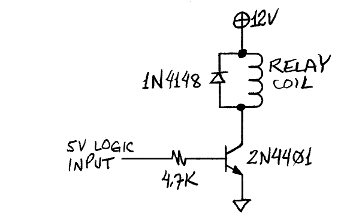I have some LED lights that I will be wiring up to a laptop charger that is 120VAC input, 12VDC 4A output. I want these lights to come on and turn off when I turn on and off my TV. Looking at the logic board in the TV, I see a connector with pins going to the TV's power supply labeld 12V, GND, ADJ and ON/OFF. I tested these pins and found the 12V stays on all the time and the ON/OFF gets 5V when you turn the TV on and goes dead when you turn the TV off. Is there a way for me to get the TV to turn the LED power supply on and off? Perhaps cut the 120VAC input line for the power supply and put a relay in there that is tied to the 5V ON/OFF pin in the TV? And which relay would I need to buy to do this? I looked at digikey and I just don't understand all of the relay terminology. I'm assuming what I need is the "Power Relay, Over 2A" and not the "Signal Relay, Up to 2A" but then it talks about coil type, coil current, contact rating, switching voltage, turn on voltage (max), turn off voltage (min).....what? If the idea of putting a relay on the ON/OFF pin to supply 120VAC to the LED power supply would work...I just need the coil to turn the relay on and off using 5VDC and the relay needs to handle 120VAC.
Is this a good way to do it or is there a better way? And what relay do I need to purchase if this is the way I should do it?
Is this a good way to do it or is there a better way? And what relay do I need to purchase if this is the way I should do it?


